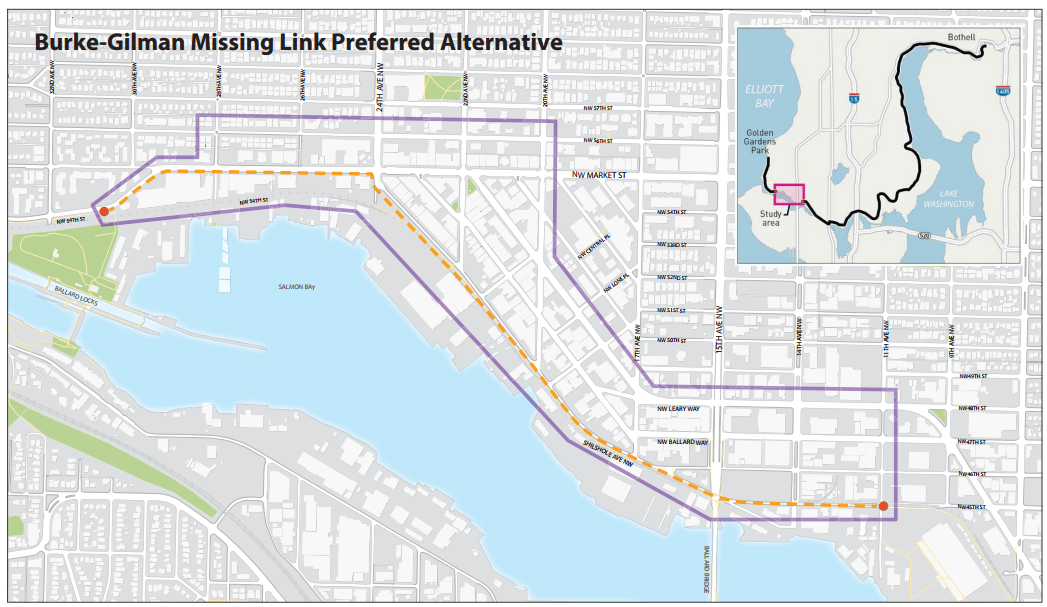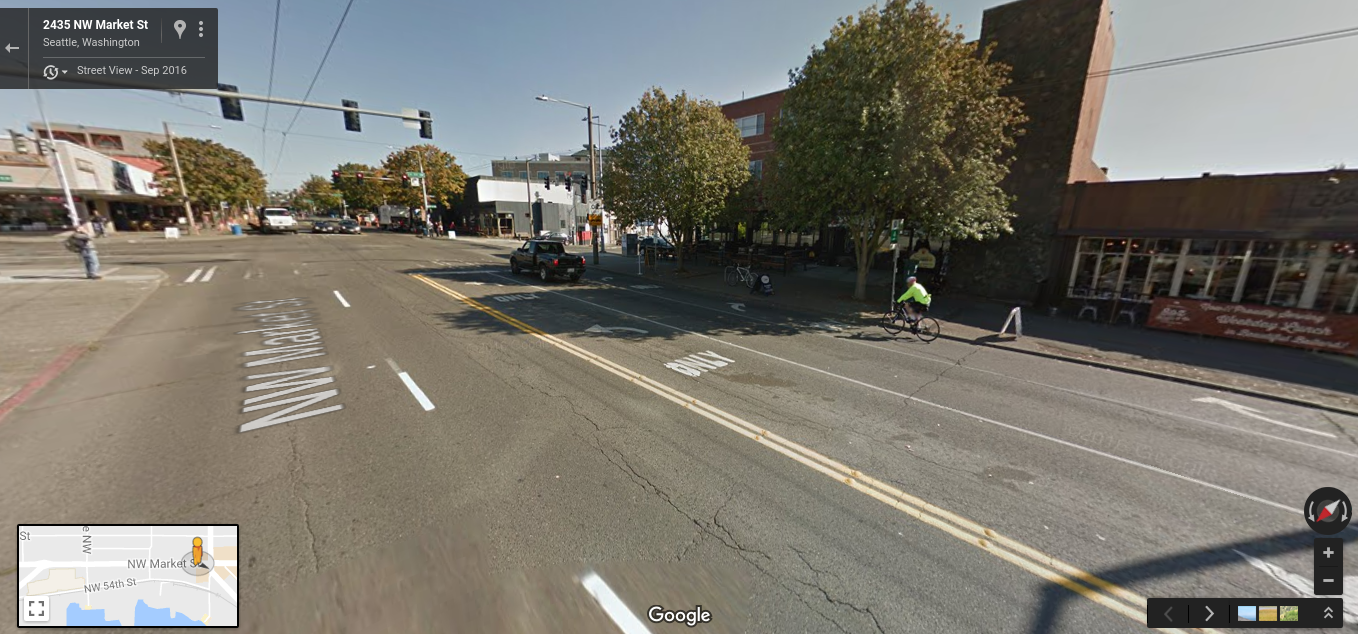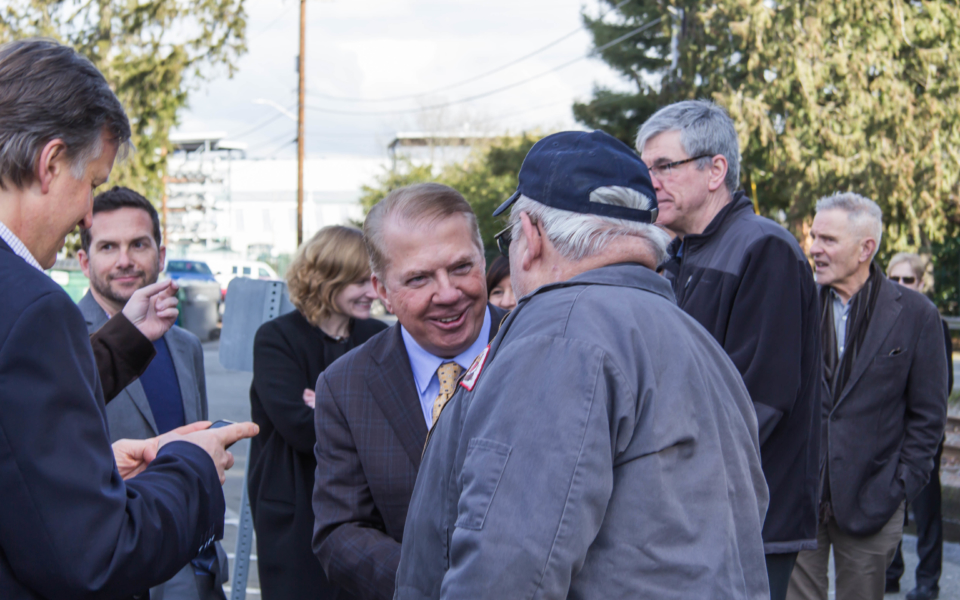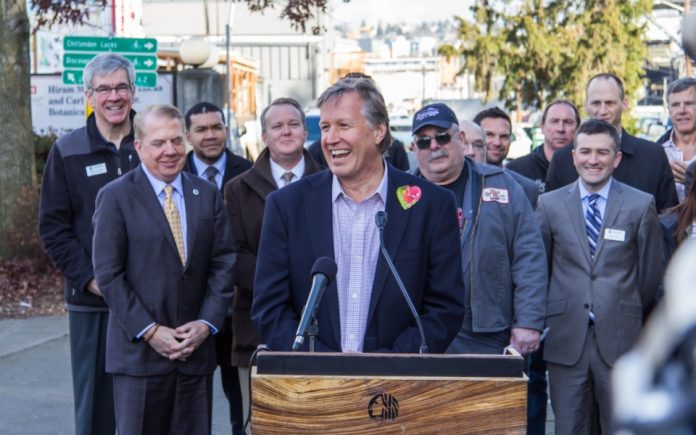The City of Seattle announced its preferred route for the Burke-Gilman Trail’s Missing Link at a Tuesday press conference at the Ballard Locks. Fortunately, the plan mostly sticks to the South Shilshole alternative that was the overwhelming favorite in public outreach with 90% support. Where the plan diverged from South Shilshole alternative may help solve another problem in the Ballard bike network: unsafe and uncomfortable bicycling conditions on Market Street, as Tom Fucoloro of Seattle Bike Blog pointed out.
The Burke-Gilman Trail is Seattle’s preeminent bike and pedestrian trail connecting Golden Gardens Park in Ballard to the University of Washington and continuing all the way out to Bothell, where it connects with the Sammamish River Trail, which continues to winery country in Woodinville and beyond. The trail’s big problem is the gap through Ballard’s industrial area on Shilshole Ave NW which forces bicyclists to make a harrowing unsignalized left turn and weave through a busy section with semi-trucks pulling in and out and carelessly parked cars presenting obstacles.
The situation isn’t just uncomfortable; it’s unsafe. “On average, two people biking are hospitalized due to crashes every month along the Ballard Missing Link,” Fucoloro wrote.
The Missing Link project, which has been in the works since 2001, would finally close the gap. The City’s preferred alternative calls for a bi-directional facility on the south side of NW Market St from 24th Ave NW to just shy of 30th Ave NW, where it tracks along NW 54th St to connect with the existing facility along the Ballard Locks.

The section of NW Market St west of 24th Ave NW is a tough spot since no bike lanes and left and right turn lanes leave the bicyclists just trying to stay out of the way and not really knowing where to go. Add to that a good deal of speeding on this wide section and it’s a dangerous mix. Thus, having a separated facility of the south side of NW Market St will be a big improvement. The alternative of running the trail along the railway right of way through this section would have made wayfinding a bit harder for people coming from Market St and points north.

Mayor Ed Murray presented the “framework” as a compromise between industrial stakeholders, who have blocked the Missing Link for years, and bicyclists and safety advocates. Fucoloro reported on the positive energy at the presser:
“I’m kinda all smiles,” said Councilmember Mike O’Brien, who in addition to representing Ballard’s district on the Council has been a longtime supporter of completing the trail. “I gotta check myself a little bit, because it’s not done yet,” O’Brien continued. “I know there are advocates who will say, ‘We’ve been here before.’”
But at the press conference, anyway, Cascade Bicycle Club and other longtime trail advocates were smiling, too. After decades of delays, lawsuits, big public meetings and a horrible number of broken bones, the path to building the trail finally seems free of major opposition.

“When designed properly, [the city] will create a safe facility next to a major truck street,” said Warren Aakervik, the owner of Ballard Oil and one of the longtime trail opponents who sued to delay the project to this point. “Hopefully we can move forward and make something safe.”
“I too have been working in this project for a decade, so it’s nice to see that soon I’ll be able move onto something else,” said Eugene Wasserman, President of the North Seattle Industrial Association, another party to the lawsuits.
The wait has been long, but it looks like the Missing Link will finally be closed, pending the release of the final environmental impact study (EIS) expected in May. “The appellants could sue the final EIS, but their chances of winning would likely be slim,” Fucoloro summarized. “A new community design group will begin working sooner than that with the hopes of having a completed design plan ready in the fall so construction can start in early 2018.”
We’re still a few years from a completed trail, but it’s good to see momentum building.
Doug Trumm is publisher of The Urbanist. An Urbanist writer since 2015, he dreams of pedestrian streets, bus lanes, and a mass-timber building spree to end our housing crisis. He graduated from the Evans School of Public Policy and Governance at the University of Washington in 2019. He lives in Seattle's Fremont neighborhood and loves to explore the city by foot and by bike.



